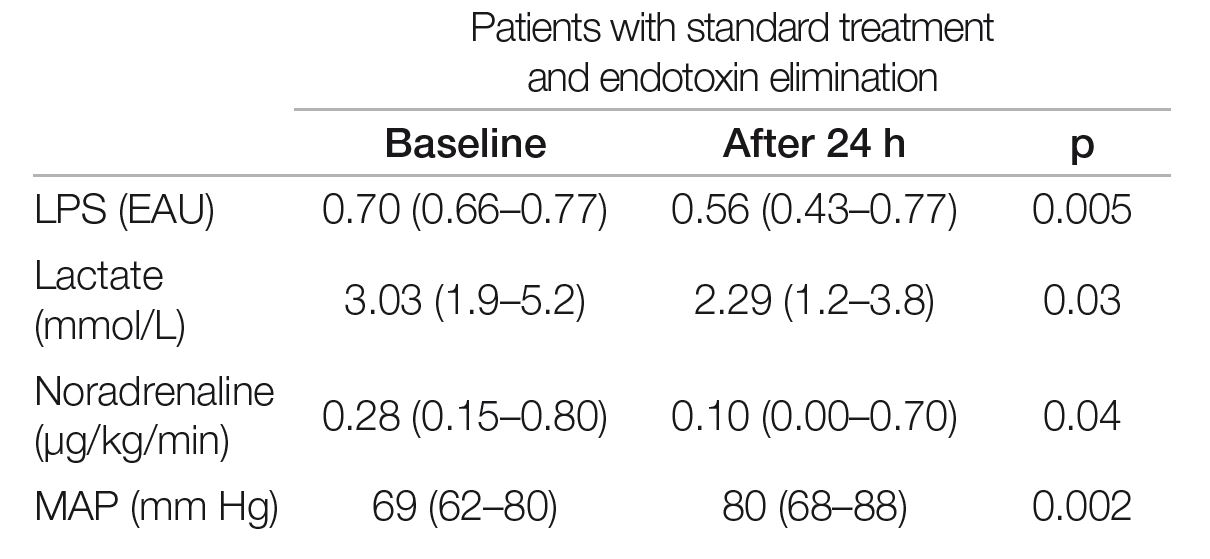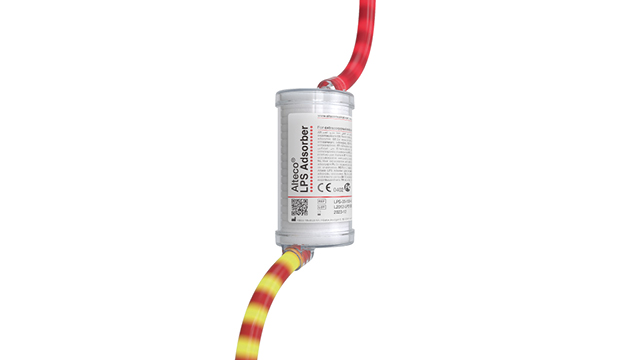
This is an open observational cohort study investigating the effectiveness of endotoxin elimination with the Alteco LPS Adsorber in patients with septic shock and endotoxemia. The aim of the study was to study whether the Alteco LPS Adsorber reduces organ failure and to assess the usefulness of the Spectral Diagnostics EAA (Endotoxin Activity Assay) in guiding the endotoxin elimination therapy.
This study provides strong arguments for using the Alteco LPS Adsorber on patient with septic shock and endotoxemia. Reduced endotoxin activity was seen in the treatment group and a simultaneous decrease in SOFA score, vasopressor requirement as well as decreased serum lactate level. The use of Alteco LPS Adsorber improves organ function in patients with confirmed endotoxemia regardless of the type of bacterial infection. Once again confirming that the LPS Adsorber is a safe and easy product to use in patients with septic shock ensuring successful treatments.
Method
64 patients were recruited from the general ICU in Wroclaw, Poland. The patients were tested with the Spectral EAA, a test based on the activation of neutrophils by endotoxin as an indicator for endotoxemia. According to the manufacturer, the EAA level is considered low <0.4, intermediate 0.4-0.59 and high ≥0.6.
Patients with septic shock and EAA <0.6 received standard care (44 patients) whereas the most severe patients i.e. patients with EAA ≥0.6 (18 patients) additionally received Alteco LPS Adsorber therapy. Endotoxin elimination therapy was initiated within 20 hours from diagnosis of septic shock (mean 16h).
In cases with persistent high EAA after the first therapy session (33%), a second session was performed after 24 h. Unfractionated heparin was used and either LPS Adsorber as hemoperfusion or hemofiltration in sequence with the LPS Adsorber.
Results
Both groups present a severe but homogenous range of SOFA scores (9-15 at baseline for the Alteco group, and 8-13 for the control group) whereas the Alteco group also had a high EAA which is associated with a worse clinical outcome (Marchall JC et al, MEDIC study 2004).
For patients with high EAA that received Alteco LPS Adsorber therapy, a significant reduction of endotoxin activity was seen. There was a significant improvement of SOFA score and reduced vasopressor requirement whereas there was no difference in the group that received standard care.
All patients that received LPS Adsorber survived 24 h, the numerical survival between the groups is equal whereas patients with high EAA is expected to have higher mortality.
Interestingly 29% of the patients in the LPS Adsorber group with high EAA levels that responded well to the therapy did not have Gram negative bacterial infection. This indicates that endotoxaemia occurs even in the absence of Gram negative infection and the Alteco LPS Adsorber may improve clinical outcome in all patients with high EAA levels.
Conclusion
Platelets decreased as during other extracorporeal circulation but no SAEs were reported.
This study from Adamik et al. demonstrates a clear decrease of EAA after Alteco LPS Adsorber therapy, a significant increase in MAP as well as a significant decrease in SOFA score, vasopressor dependency and lactate. These results promotes the use of Alteco LPS Adsorber as it offers an efficient therapy for patients in septic shock with endotoxemia.

Fig. 1. Endotoxin activity (EA) in the blood samples of patients with septic shock who received standard treatment plus LPS elimination, measured at the baseline (n = 18), at 24 h after the first session (n = 18), and 24 h after the second session (n = 6) of endotoxin elimination

Table 2 Changes in the parameters of patients receiving endotoxin elimination therapy and in the standard treatment group
Endotoxin removal
The Alteco LPS Adsorber contains discs made of porous polyethylene (PE) covered in a tailor-made peptide. The peptide binds to lipid A (the toxic part of endotoxin) with high affinity. By adsorbing harmful levels of endotoxin from the patient’s bloodstream, the Alteco LPS Adsorber can break the chain of immune system overreactions that can spiral into septic shock. This helps to stabilize the patient’s hemodynamic parameters in the acute situation.



